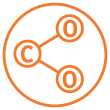Volume and load of sewage treatment plants
Key Finding
The annual volume and load of nutrients released from coastal sewage treatment plants into waterways in Queensland has been collected since 2010. In general, we have observed that the loads of nutrients, particularly nitrogen, are correlated with the annual volume. However, loads of nutrients in some locations have reduced in recent years despite high annual volumes and were attributed to improved treatment in these locations.
Filter this information
Queensland or wastewater region:
- Map
- List
Wastewater region (select locations to filter information)
Queensland
Most effluent released directly into waterways from sewage treatment plants in Queensland comes from the more populated coastal areas in South East Queensland (SEQ), and from coastal Great Barrier Reef (GBR) catchments.
The combined volume of treated sewage released to coastal waterways has been relatively steady since 2010 at around 290 gigalitres per year.
- Slight reductions in 2014 and 2016 are most likely due to below average rainfall and a subsequent reduction in inflows to the sewage treatment plants.
Nitrogen and phosphorus are present in treated sewage and can impact on waterways, particularly in promoting excessive plant and algal growth.
Sewage treatment plants release about 1,200 tonnes to 1,300 tonnes of nitrogen to coastal Queensland waterways annually.
- This has been relatively steady since 2010.
- Nitrogen load was lower in 2014 and 2016, attributed to lower rainfall and lower treated sewage volumes, particularly from plants in SEQ.
Sewage treatment plants released 490 tonnes of phosphorous into coastal waterways in 2019.
- There have been significant decreases in phosphorous load since 2015.
- The average phosphorus concentration of releases in Queensland in 2019 was 1.7mg/L, reduced from 2.1mg/L in 2016.
- This significant reduction in phosphorus concentration and load is attributed to improved treatment from both SEQ and GBR plants.
South East Queensland
Since 2010, the combined annual volume of treated sewage released to coastal waterways in South East Queensland (SEQ) has been about 230 gigalitres.
- Notable exceptions were in 2014 and, to a lesser extent, 2016. The reductions were most likely related to below average rainfall and a subsequent reduction in inflows to the sewage treatment plants.
Nitrogen and phosphorus are present in treated sewage and can impact on waterways, particularly in promoting excessive plant and algal growth.
The total load of nitrogen released from sewage treatment plants to coastal waterways in SEQ has varied since 2010, ranging from 870 tonnes to 1,010 tonnes per year.
- A significant drop to 780 tonnes was observed in 2014, attributed to lower rainfall and inflows to SEQ plants that year.
Improved treatment in SEQ plants has seen significant improvements in both the total phosphorus load released to coastal waterways and its concentration.
- About 430 tonnes of phosphorous was released in 2019.
- This compares with about 530 tonnes per year from 2010 to 2015.
- In 2019, the average phosphorus concentration was about 1.8mg/L, compared to an average of 2.1mg/L in 2016.
More information:
Relevant Sustainable Development Goals’ targets
Download data from Queensland Government data
Metadata
Annual volume and load of nitrogen and phosphorous released from sewage treatment plants into waterways for the South East Queensland and Great Barrier Reef catchment areas for the period 2010–2019. Monitoring data was sourced from the department’s Water Tracking and Electronic Reporting System (WaTERS) which receives discharge monitoring data from councils and water utilities in Queensland. The data presented is for coastal sewage treatment plants that release directly to estuarine or marine water or release to locations within 10km from estuarine or marine waters.









